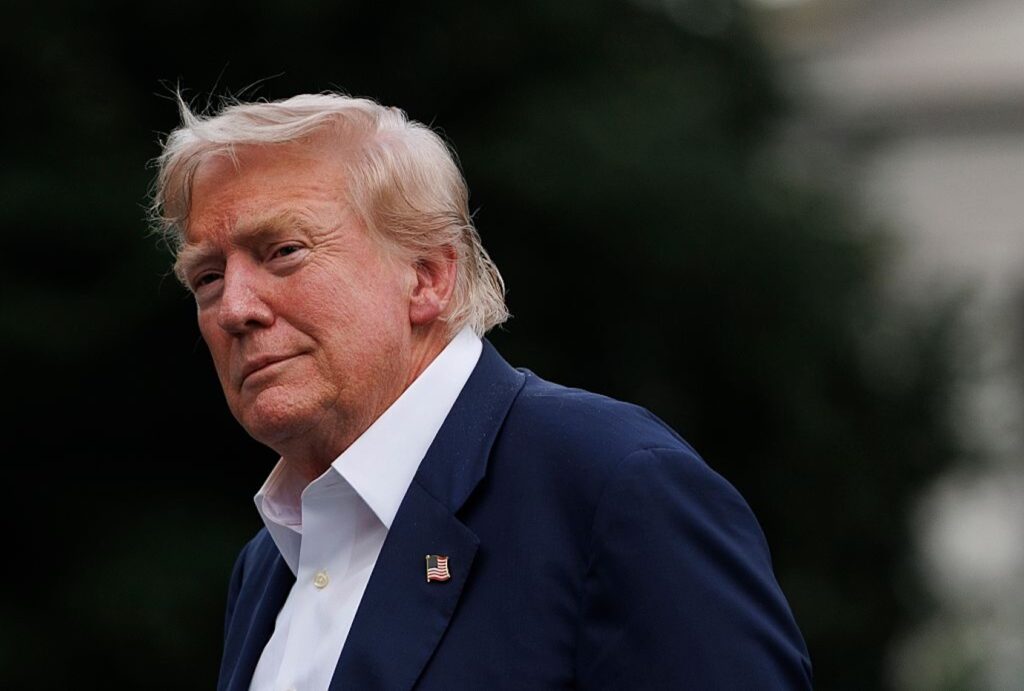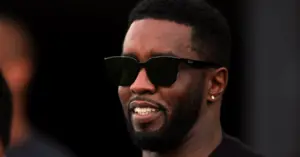
WASHINGTON, JULY 29: President Donald Trump, joined by family members, exits Marine One on the South lawn at The White House in Washington, on July 29, 2025. The President returned to Washington following a foreign trip to Scotland. (Photo by Tom Brenner for The Washington Post via Getty Images)
President Donald Trump has leveraged his clemency powers during his second term to grant pardons predominantly to political allies, donors, and figures tied to his administration, diverging significantly from established protocols. The recent pardons, which included 77 individuals such as Rudy Giuliani, primarily serve symbolic purposes and do not address ongoing or potential state prosecutions faced by many beneficiaries.
In total, Trump has issued clemency to a range of individuals, including those convicted of financial crimes similar to his own. Notably, last month, he commuted the sentence of George Santos, a former congressman found guilty of fraud and lying to Congress. Santos had been sentenced to seven years for his crimes but was released after serving less than three months.
The clemency process, as outlined by the Department of Justice, typically requires applicants to wait five years post-release, exhibit good conduct, and file petitions through the Office of the Pardon Attorney. Yet, in Trump’s second term, only 10 out of approximately 1,600 individuals granted pardons had followed this established procedure. Many applicants who adhered to the rules find themselves waiting for decisions as the number of pending requests continues to rise.
Despite more than 10,000 petitions for pardons or commutations filed since Trump’s return to office, the traditional process appears increasingly ineffective. Those adhering to the standard protocols include small business owners and veterans, all of whom face barriers due to their criminal records.
“It’s unfair to the little guy,” remarked Margaret Love, a former pardon attorney under Presidents George H.W. Bush and Bill Clinton. She represents individuals seeking clemency and is disheartened by the apparent disregard for the standard procedure.
The pattern of bypassing formal review processes began during Trump’s first term, where less than half of his clemency recipients applied through the appropriate channels. In stark contrast, the current administration’s actions have further eroded trust in the established system. A significant portion of the pardons, approximately 1,500, benefited those involved in the January 6, 2021, Capitol riot. Others received clemency through less conventional means, raising questions about the influence of political connections over merit.
A recent report from the House Judiciary Committee indicated that Trump’s second-term pardons have eliminated over $1.3 billion in restitution and fines owed to victims, a concern that the White House dismissed as “pointless.” The Securities and Exchange Commission has also dropped parallel civil cases that could have compelled some clemency recipients to return substantial sums to the government, further complicating the situation for victims.
Following his decision to pardon Changpeng Zhao, the founder of the cryptocurrency exchange Binance, who spent four months in prison for money laundering charges, Trump stated that “a lot of people asked me” to grant the pardon, despite not knowing Zhao personally. Critics argue that such decisions highlight a troubling trend of using clemency to reward political supporters rather than address justice fairly.
Within the White House, discussions surrounding clemency have taken on a more political tone, with Jared Kushner previously convening a meeting to discuss reforms. While Trump signed the First Step Act in December 2018, intended to ease certain federal sentences, the clemency process itself remains largely unaltered, with Trump favoring personal connections over procedural integrity.
Many individuals seeking pardons express frustration over the opaque nature of the current process. Tony Gene Broxton, a former fire department employee who lost his right to bear arms due to a felony conviction, applied for a pardon after Trump’s return to office. He is still awaiting a decision, despite having fulfilled the restitution requirements mandated by the court.
As the clemency landscape evolves, it raises significant concerns about fairness and accessibility for those outside Trump’s inner circle. Individuals like Liliana Trafficante, who is navigating her own path to redemption as a former convict, are left feeling disillusioned by a system that seems to prioritize connections over genuine rehabilitation.
The current state of presidential pardons illustrates a departure from traditional practices, emphasizing the need for transparency and fairness in clemency decisions. Without substantial reforms, the hope for many remains uncertain.







